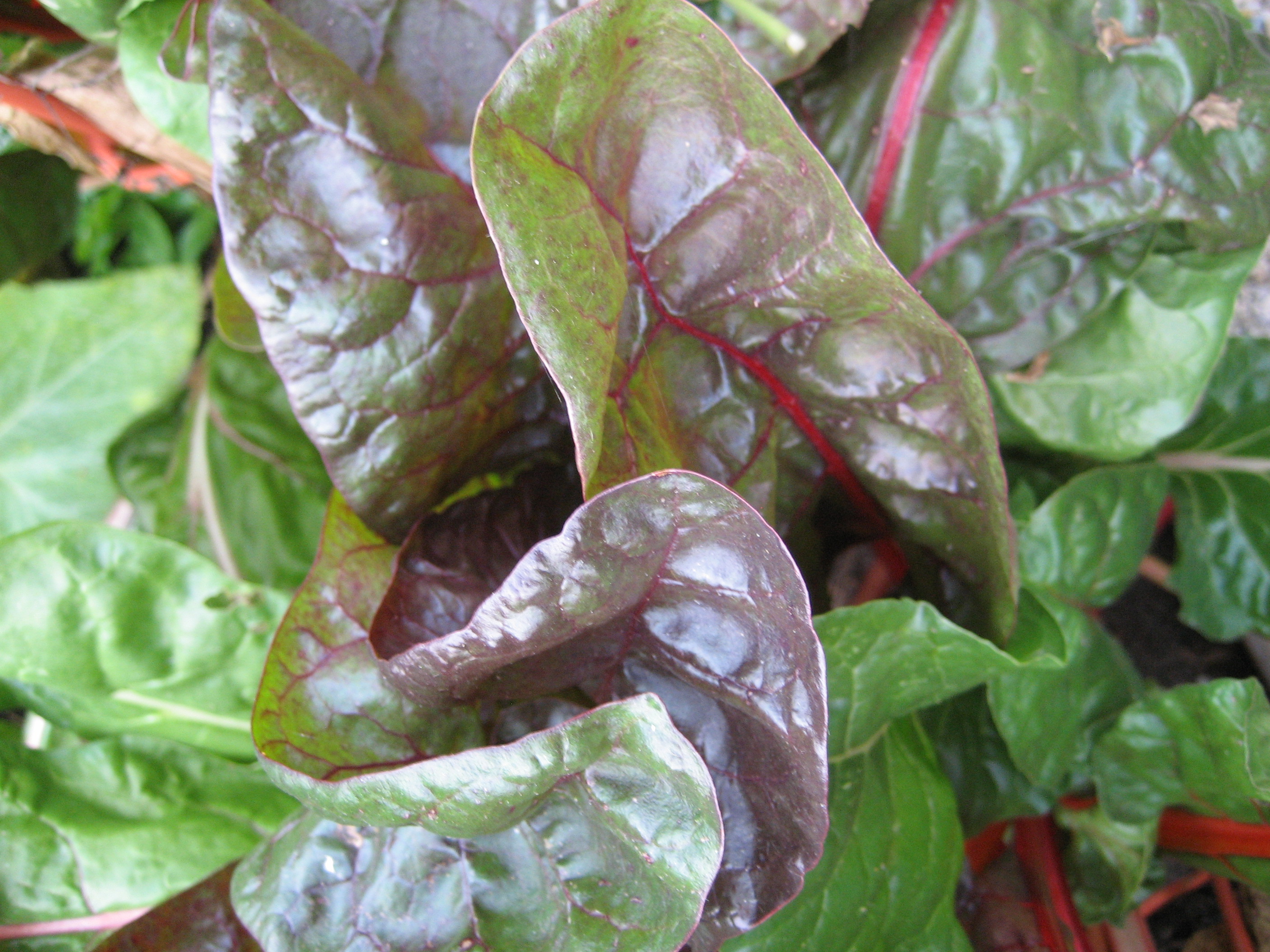About Swiss Chard
Swiss Chard is a nutrient-rich leafy green that belongs to the same family as beets and spinach, and has a similar flavor profile with a bitter, acid-sweet taste. There are several varieties of swiss chard: red, green, silver (white), pink and gold. “Rainbow Chard” is actually a mix of different colors in one package. The stems and the leaves are edible, and can also add a nice splash of color to any dish.
How do you know when it is ready to harvest?
Chard can be harvested while the leaves are young and tender (smaller than 4 inches) or after maturity (1-2 feet high). Cut about 1 ½ to 2 inches from the base of the plant with very sharp scissors. Once you have begun your Swiss chard harvest, the plants can be continually harvested up until frost. If you desire a fresh addition to a tossed salad, you can snip Swiss chard leaves when they are very small and eat them raw. Larger pieces of chard can be cut and cooked, stalks and ribs included. You can also use the ribs on mature chard as you would celery in a recipe. As long as chard is cut (while still leaving a few leaves on to promote growth) the plant will produce more leaves very quickly.
How do you store it?
Wrap unwashed chard in a damp towel and place in the refrigerator drawer. Washing the leaves will promote spoilage sooner, so it is best to wash just before use. Chard stored this way will last about a week in the fridge. As with any greens, if they get wilty you can “shock” them in bowl of ice water for a few minutes to crisp them back up.
You can also blanch and freeze chard if you have too much and can’t use it all right away. Wash, chop, and place in a pot of boiling water for 2-3 minutes until bright green. Then place in a bowl of ice water to stop the cooking process, drain, and pack in freezer bags to store in the freezer. Chard stored this way is already cooked, so you can easily just toss it in to some pasta to thaw quickly.
How do you cook it?
Wash chard in cold water, dry, and chop the leaves and stems as desired (larger stems will take longer to cook). Some people like to remove the leaves from the stem and cook them separately. Younger leaves can be eaten raw in salads, or cooked. Larger tougher leaves are best sautéed or steamed. You know they’re done when the leaves are wilted and tender, usually just takes a few minutes to cook. NOTE- chard will bleed its color onto other foods when cooked together, so don’t panic when it turns your potatoes red! You can substitute chard for spinach in any recipe, and since it choc-full of healthy nutrients, try adding it to smoothies for a healthy treat too!
RECIPE:
This recipe combines another seasonal favorite- blueberries- and could be used as a side dish, or a condiment to some grilled meat. Plus, it is SUPER fast and easy!
Local Blueberry and Chard Sauté with Bacon and Honey
2 slices bacon, thinly sliced
2 bunches Swiss chard, sliced about 1/4-inch thick, stems included
1 peeled shallot, cut into 1/8-inch rings
1/2 pint blueberries
1 tablespoon unsalted butter
1 tablespoon honey
Salt and pepper
Add the bacon to a hot pan and cook until browned and crispy. Add shallot and butter and sauté for 20 seconds. Add chard. When the chard is slightly wilted, add blueberries and saute until the fruit just starts to split. Add honey, plus salt and pepper to taste.
— Note: Recipe courtesy of Winston Blick of Clementine, who recommends serving it over chicken or grilled pork chops.







